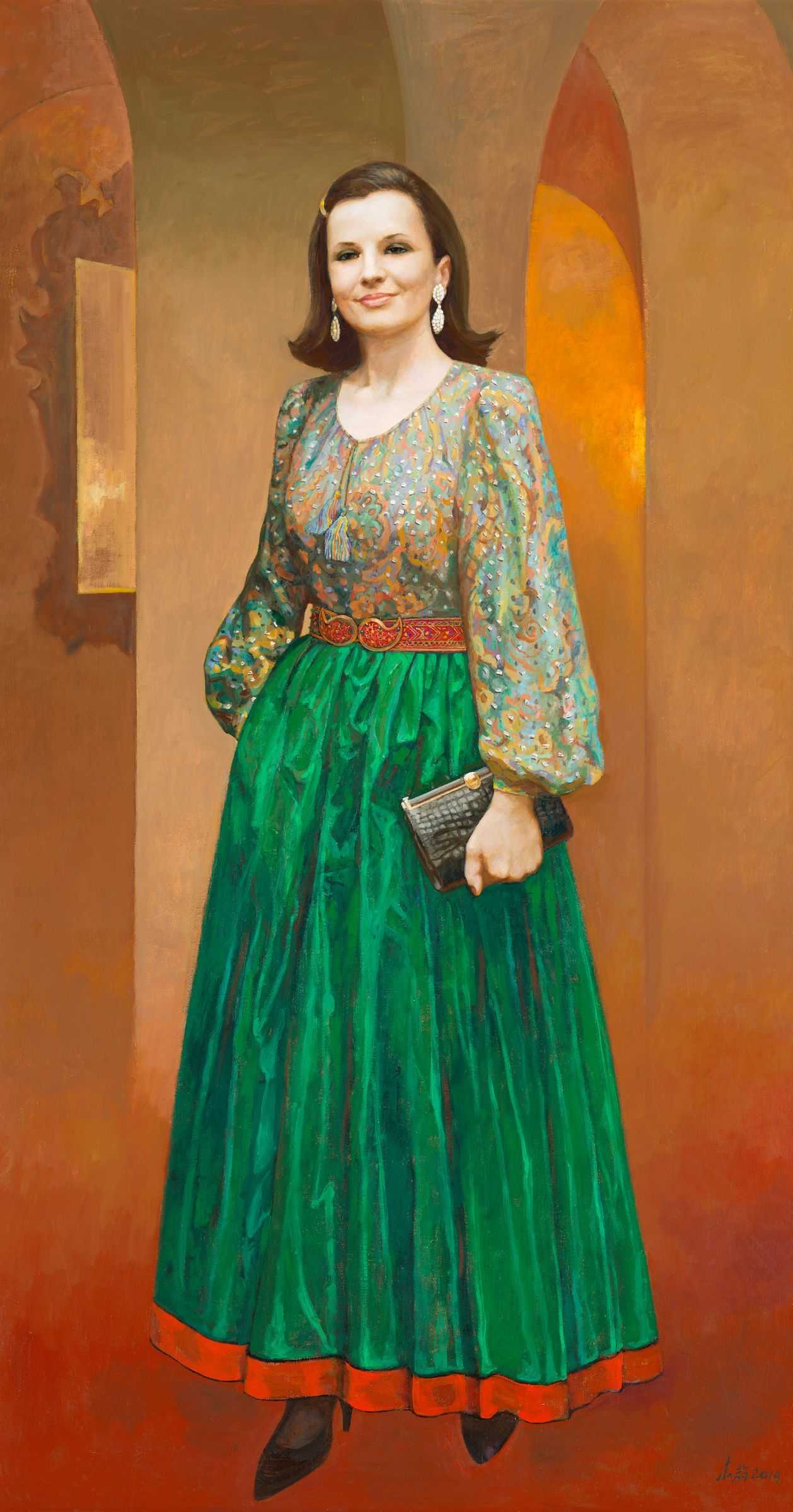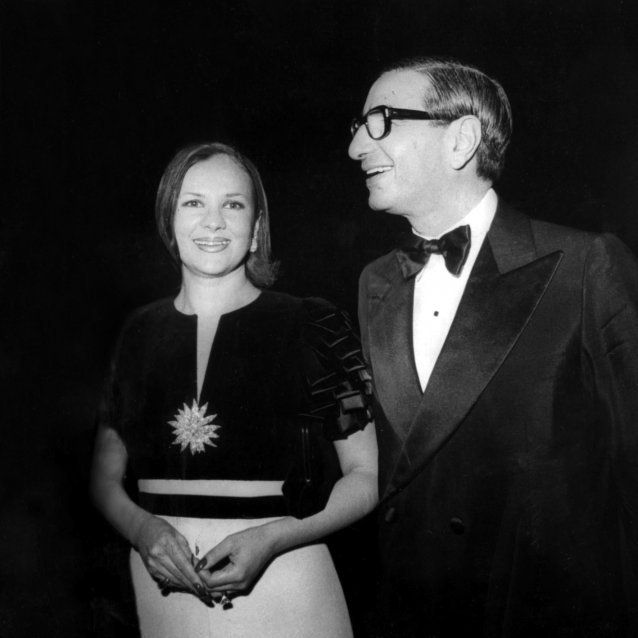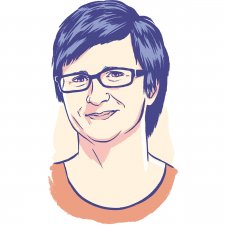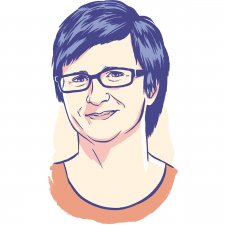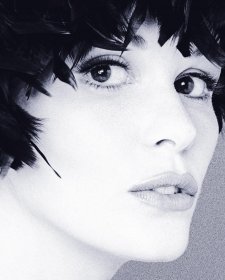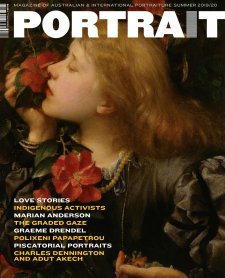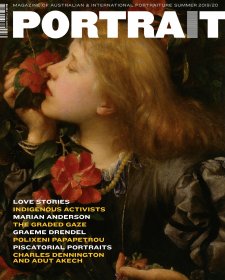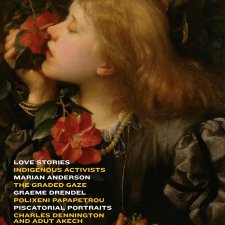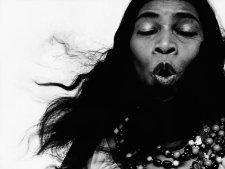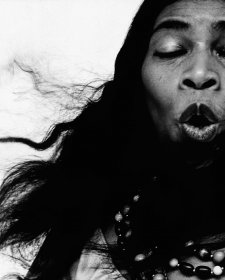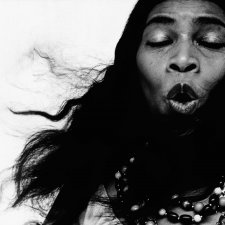When writing about an exceptional woman these days, it is not the done thing to begin with what she is wearing. But we must eschew this convention for the National Portrait Gallery’s recently acquired portrait of Susan Wakil AO by Jiawei Shen.
The painting’s elegant subject bears a warm half-smile, which illuminates her evening ensemble from French designer Yves Saint Laurent’s ‘Opéras – Ballets Russes’ autumn/winter 1976-77 collection. The artist has captured the sheen and fall of Wakil’s green moiré silk skirt, and the blue, pink, and purple detail in her silk chiffon blouse. Sergei Diaghilev’s extraordinarily influential avant-garde company, the Ballets Russes, was based in Paris and toured Europe and America between 1909 and 1929. The New York Times suggested that Saint Laurent’s ‘revolutionary collection’ would ‘change the course of fashion in the world’.
An outfit with such an influential place in fashion history sits comfortably with the story of its wearer – replete with such elements as a flight from world conflict and transformative contributions to the arts, health and education in this country. Poised and graceful, with slightly tilted head and hand in pocket emphasising her relaxed bearing, Wakil inhabits her haute couture garments, resplendent under Shen’s smooth brushwork.
Born in Bessarabia in 1933, Wakil fled as a teenager with her aunt to Australia from war-torn Eastern Europe. Now lying within Moldova and Ukraine, Bessarabia was then disputed territory, with the Soviet Union and Romania laying claim to it. Wakil’s mother did not survive the conflict. Her father had been imprisoned in a Siberian gulag, but joined his daughter in Australia upon his release. Susan met and married Isaac Wakil in Sydney in the 1950s; Isaac was born in Baghdad, arriving in Australia from Iraq after the ‘Farhud’ – a violent dispossession of the Jewish population in 1941. Together, the Wakils became successful entrepreneurs in the clothing business.
